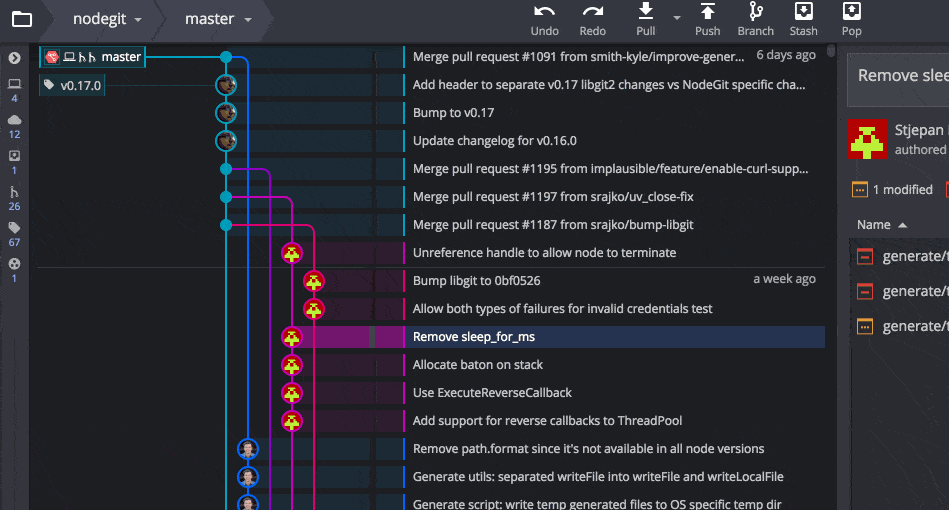

add a description of what this folder/repository will contain.Keep this to letters, numbers, and underscores for this class, let’s call it “gitkraken_workshop”. Today, we will be initializing a repository within a new folder, click on Init, and then, so that we can create a repository that we will keep locally, as well at a remote location as a backup or perhaps for sharing:.This will allow you to either Open an existing repository, or Clone a repository that you or someone else has created, or Init (initialize/create) a new repository. Click on the folder icon at the top left corner.There are a number of different ways to add files/folders for Git/GitKraken to track. Creating a Folder/Repository, Starting from your Local Machine We recommend placing it on your Desktop for the duration of this workshop. It can be set up to ignore some items in the folder (very large datasets, or temp files)ĭownload the folder we have generated for this session from here, and unzip it in a location of your choosing.The changes made within folders with repositories are being “watched” by Git as mentioned above, but these changes have to be deliberately added to the repository in order to be version controlled or recorded.Do not create repositories for folders within a repository (avoid matryoshka repos!).A separate repository for each separate project.A repository can have many files and sub-folders (basically, a normal project folder).git/ folder, then you delete your project’s history.”Įssentially, a (project) folder is chosen to be tracked and a Git repository is initiated within it this ensure that the contents, and the changes to the contents within that folder will be “watched” by Git.Ī few salient features of repositories are listed below: This repository tracks all changes made to files in your project, building a history over time. Version Controlling a directory of files Creating a Repository At this point, you are ready to start working with a repository. Once you sign in, GitKraken will take you to it’s welcome screen. When connecting GitHub to GitKraken, make sure that the authorization is performed on either Chrome or Firefox and not on Internet explorer. Open it, and sign in using the credentials you used to sign up for a GitHub account. Most of you should have already installed GitKraken.
Since we are going to be using GitHub we will need to register for an account at GitHub if we don’t already have one.
#Gitkraken windows how to
Here is a glossary of associated terms, however it is best to pick up terminology while learning how to use GitHub. Some of the commands/terms are fairly self-explanatory, others less so, and in this workshop you will encounter both of these. One of the trickier aspects of using Git is the associated jargon ( repository, add, commit, pull, push, remote, detached head). Two examples of GUIs are GitHub Desktop and GitKraken.Īlthough there are several advantages to using the command line version of Git in the long run, a GUI is a great place to start with learning about Version Control. However, there are several tools that enable the use of Git easily for novices using a Graphical User Interface (GUI), enabling a point-and-click interface. a terminal interface from a UNIX/Linux OS. Usually when programmers use Git for version control of their code, they use the command-line user interface, i.e. Getting Started with Git using a GUI (Graphical User Interface) In this lesson the focus will be on gaining an understanding of the basic aims and principles of Version Control by working with a plain text document using Git (GitKraken & GitHub). Previous: Introduction to Version Control Getting Started with Git using GitKraken | Introduction to Version Control (GitKraken/Github) Introduction to Version Control (GitKraken/Github) GitKraken lesson (forked from HBS-RCS) View on GitHub


 0 kommentar(er)
0 kommentar(er)
